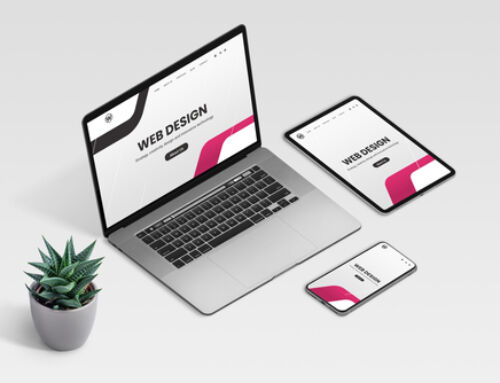Introduction to Responsive Design
In the ever-evolving digital technology landscape, where the variety of devices accessing the internet is as diverse as the users themselves, the significance of responsive web design (RWD) cannot be overstated. Responsive design refers to creating websites that offer an optimal viewing experience across various devices, from desktop computers to mobile phones and tablets. This methodology ensures that a site’s content, images, and structure work seamlessly on any screen size, improving usability and eliminating the scrolling, resizing, and panning often occurring when a site is not optimized for different devices.
The core of responsive web design lies in its fluidity and adaptability. Using flexible layouts, images, and cascading style sheets (CSS) media queries, designers can create a single, dynamic website that automatically adjusts its design and content to fit the screen size and resolution of the viewing device. This is achieved by setting breakpoints in the code that trigger different styling rules based on the device’s characteristics to access the site.
The importance of responsive design in today’s digital landscape is multifaceted. Firstly, it significantly enhances the user experience. A responsive website is easy to navigate and interact with, regardless of the device used, leading to increased user satisfaction and engagement. Secondly, responsive design is critical for search engine optimization (SEO). Search engines like Google prioritize mobile-friendly websites in their search results, recognizing the shift towards mobile internet usage. Websites that are not responsive risk being ranked lower, reducing their visibility and potentially impacting their traffic and conversion rates.
Moreover, responsive design offers economic and operational efficiencies. Instead of developing separate websites for desktop and mobile, businesses can invest in a single site that caters to all users, simplifying web development and maintenance. In an era where digital presence is crucial for success, responsive web design is not just a best practice; it’s a necessity for businesses aiming to stay competitive and accessible in the digital domain.
Understanding the Basics
The foundation of responsive web design (RWD) is a strategic approach to creating websites that fluidly adapt to the screen size and orientation of the user’s device. This adaptability ensures that all users, regardless of how they access the web, have an optimal viewing and interaction experience. The responsive design approach, breakpoints, and visual content management support this goal, each playing a crucial role in developing a truly responsive website.
The Responsive-Design Approach
At the heart of the responsive design approach is fluidity and flexibility. This method involves using fluid grid layouts that use percentages rather than fixed units like pixels for layout widths, flexible images that resize within their container elements, and CSS3 media queries. Media queries allow the webpage to use different CSS style rules based on the characteristics of the device the site is being displayed on, most commonly the width of the browser.
Breakpoints
Breakpoints are the foundation upon which responsive designs adjust to different screen sizes. They are predefined points where the website’s content and layout will adapt to provide the best possible user experience. Typically, breakpoints are based on the widths of standard devices such as smartphones, tablets, and desktops. For example, a standard set of breakpoints might include widths of 320px (smartphones), 768px (tablets), and 1024px (desktops). Designers use these breakpoints to guide the rearrangement of content, text scaling, and transformation of navigational elements to ensure readability and usability across devices.
Visual Content
Visual content, including images, videos, and graphics, plays a significant role in responsive design. The challenge lies in ensuring these elements scale appropriately across different devices and load efficiently to maintain fast page speeds. Techniques such as adaptive image serving, where different image sizes are delivered based on the device’s screen size, and using scalable vector graphics (SVGs) for icons and logos help achieve responsive visuals without compromising performance.
Why Responsive Design is Crucial for SEO and User Experience
Responsive design directly impacts a site’s search engine ranking and user experience (UX). Google and other search engines prioritize mobile-friendly websites in their search results, recognizing the shift towards mobile browsing. A responsive website will likely rank higher, increasing visibility and traffic.
From a UX perspective, responsive design eliminates the frustration of poor navigation and readability issues on devices with smaller screens. It ensures that users have a positive experience regardless of how they access a site, which can lead to increased engagement, lower bounce rates, and higher conversion rates. In essence, responsive design is not just about adjusting to screen sizes; it’s about providing a seamless and satisfying online experience for everyone.
Best Practices for Responsive Design
Flexible Everything
In responsive web design, the mantra “Flexible Everything” is paramount. This principle underscores the importance of adaptability in layouts, images, and components to ensure seamless user experiences across devices. By embracing fluid grids, responsive images, and dynamic elements, designers can craft websites that gracefully respond to any screen size, enhancing accessibility and engagement. This flexibility is the cornerstone of modern web design, ensuring beautiful and functional content regardless of the viewing context.
Modify Images
Responsive web design demands that images adapt to various screen sizes without losing quality or relevance. Techniques such as sizing and cropping are essential, allowing images to scale appropriately across devices. Implementing responsive images involves setting multiple source options or using CSS to ensure images load efficiently and enhance the visual experience on any device, from smartphones to desktops.
Pay Attention to Breakpoints
Breakpoints are critical in responsive design, signalling when the website layout should adjust to accommodate different screen sizes. A recommended practice is to define at least three breakpoints—corresponding to smartphones, tablets, and desktops—to ensure content looks and functions optimally. These breakpoints are significant as they guide the responsive adaptation, enhancing user experience across devices.
Minimalism Matters
In responsive design, minimalism isn’t just an aesthetic choice; it’s a strategic approach that significantly enhances user experience. By simplifying interfaces and content, minimalism ensures faster loading times, more straightforward navigation, and transparent communication across all devices. This streamlined approach reduces cognitive load, making information consumption more intuitive and engaging for users, regardless of their device.
Prioritize and Hide Content Appropriately
Effective, responsive design involves deciding which content to display or hide based on screen size. Prioritizing critical information ensures that users on smaller devices are presented with the most relevant content, enhancing usability. Techniques like collapsible menus and tabs help manage space while keeping the user experience focused and clutter-free.
Research Competitors & Industry Leaders
Studying the responsive design strategies of successful brands and competitors is invaluable. It offers insights into industry standards, innovative approaches, and user expectations. By analyzing how these entities adapt their websites across devices, businesses can identify best practices and creative solutions to enhance their responsive design efforts, ensuring they remain competitive and relevant.





